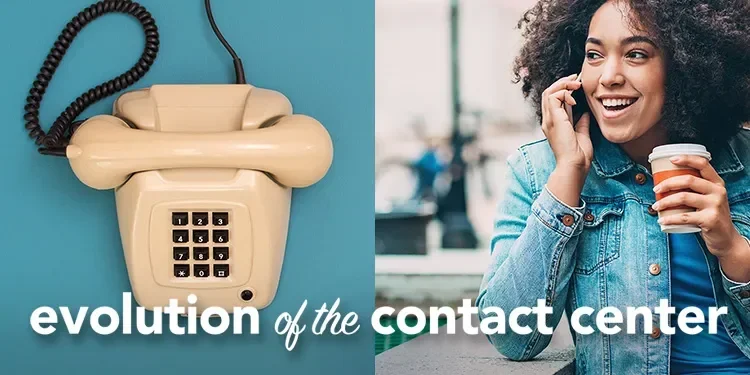
Summer Series: IVR Old and New for Improving the Customer Experience [Part 2]
In a perfect world Interactive Voice Response (IVR) would have been obsolete for a long time already. Self-service has moved away from the phone to web. In my last blog I talked about bill pay within the IVR. By the early 2000’s most financial institutions offered bill pay on the web which was a pleasure to use, and certainly easier than doing it with the 10 keys on a phone.
With most self-service now taking place on the web or mobile devices, IVR’s main purpose is to help figure out why a customer is calling so it can route them to an appropriately skilled agent. It’s possible but difficult to build an IVR that can determine customer intent based on customer information and the breadcrumbs of recent self-service activity.
And let’s face it, I’ve tried to self-serve using the entire World Wide Web, the company website, and mobile application. Am I really going to try again with the IVR? Fat chance, I’d say.
But alas, the world isn’t perfect. And investment in systems appropriate to eliminate the IVR, hasn’t been possible everywhere.
That being said there is strong reason to think that IVR or something similar based on the spoken voice of a customer could be universally available in the near future. Imagine being able to speak to a company naturally and instantly through a link on the web, a button in a mobile app, or yes an IVR at the end of a phone line.
Machine learning has been mixed together with decades of research and work with some notable recent advances in understanding human speech. For narrowly focused solutions, things enabled on your iPhone for example, it’s good. Certainly useful enough to use and put up with the occasional mishearing.
What’s needed now is a system that can automatically ingest company information, from a knowledge base for example, and then respond to natural customer requests for information with minimal, manual training.
As Donkey says in the back of the carriage going to Far Far Away: “Are we there yet?”
Not yet Donkey, but with the recent advancements it’s looking more and more like we’ll get there soon enough to see a rebirth of IVR as a useful and easy way to interact with companies.
In the meantime, IVR can still be a very useful part of your customer’s journey. Keep the following in mind as you build out your IVR strategy.
- Efficient Call-Routing and First Contact Resolution: Customers want to communicate on their terms, when it’s convenient for them. IVR systems help route callers to the representative most capable of meeting their needs. As a result, IVRs reduce the likelihood of transfers between agents and speed up the support process. The agent who receives the call is more qualified to answer the caller’s question and, consequently, less likely to transfer the call to another agent.
- Let your customer’s know that this is one of your goals. If they understand that the IVR will help them solve their problem faster they will be more likely to use it.
- Let your customer’s know that this is one of your goals. If they understand that the IVR will help them solve their problem faster they will be more likely to use it.
- Self-Service: Not every caller is looking for direct support, some just need simple answers. IVR prompts allow callers to sort and gather information for themselves, without having to speak with a customer support representative. Keep this simple.
- It might be worthwhile segregating this into its own menu:
- “If you haven’t heard of the web or don’t have access to a mobile phone right now and don’t have anybody near you that you can ask . . . press 2 for common questions.”
- OK, I’m just kidding! But segregating self-service on the IVR can improve the customer experience.
- It might be worthwhile segregating this into its own menu:
Today many IVRs use self-service as a barrier to speaking with someone. But likely they’ve already tried self-serve and an option to reduce their effort as they try to solve their issue.
For years, IVR was the most feasible channel of communication when it came to customer service. But the 1990’s introduced a new channel for customers to interact with companies that would change customer support forever. Can you guess what it is? Join us again next week to see if you’re right!



